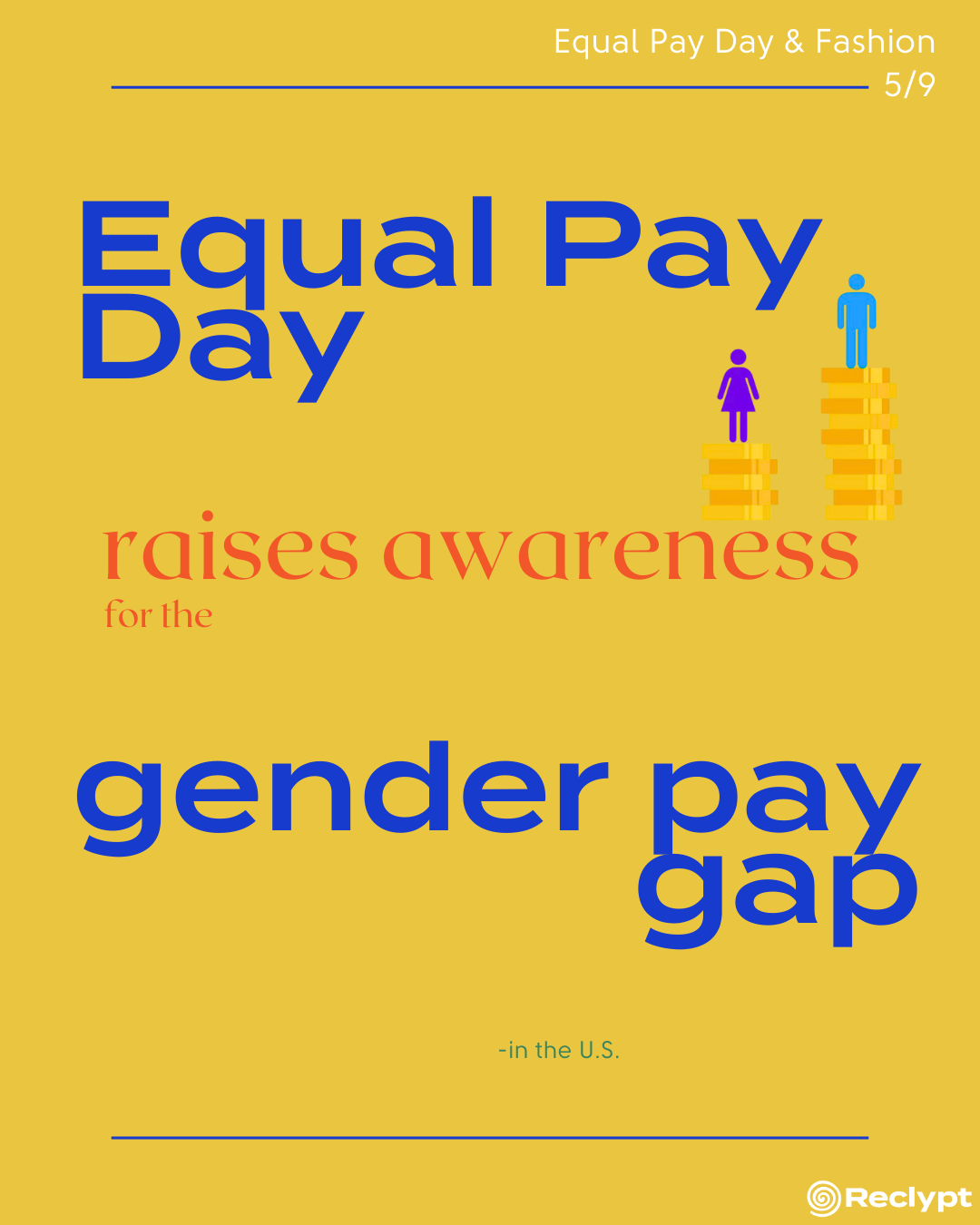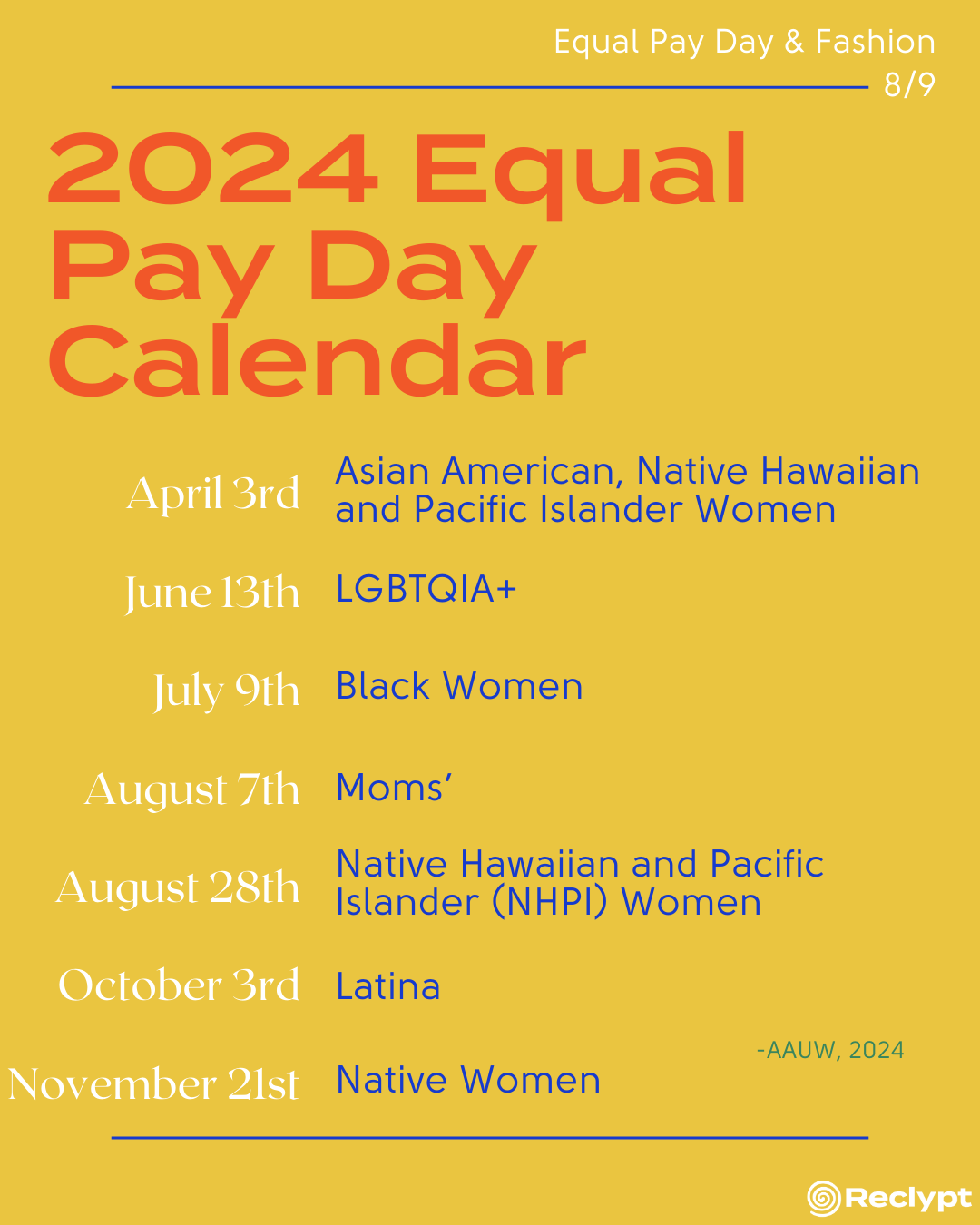With a simple flip of a calendar page the world said goodbye to women and hello to Earth. April 1st marks the first day of Earth Month, and while we are all for Earth Month (hope to see you at our Earth Month event!), we won’t let new empty marketing tactics stunt our awareness of the inequality within women.
On March 12th, flashy campaigns of women empowerment and equality circulated for “Equal Pay Day.” While they weren’t all for likes, visibility, and brand image, many failed to acknowledge the elephant in the room.
But let’s back up, what is equal pay day?
“Because women earn less, on average, than men, they must work longer for the same amount of pay. The wage gap is even greater for most women of color.”
It’s a moving date (in 2023 it was March 6th) as the pay gap is not constant, but what isn’t changing is the awareness beyond white women.
March 12th marked the Gender Pay Gap of all women, and while this is still shocking (being paid less for the same work is NEVER okay), it’s important to examine the the inequalities within this group.
Today, April 3rd, marks the Gender Pay gap for Asian American, Native Hawaiian and Pacific Islander Women’s Equal Pay Day.
From AAUW:
Asian American women working full-time, year-round are paid 99 cents and all earners (including part-time and seasonal) are paid 89 cents for every dollar paid to non-Hispanic white men.
Native Hawaiian and Pacific Islander (NHPI) women working full-time, year-round are paid 66 cents and all earners (including part-time and seasonal) are paid 60 cents for every dollar paid to non-Hispanic white men.
Reflecting on the discrepancies within “women” can help unite us and drive change!
Intersectionality: People who identify as women's experiences and challenges are not uniform. Factors such as race, ethnicity, age, disability, sexual orientation, and other identities intersect with gender to create unique barriers and opportunities in the workplace, including differences in pay. Recognizing these intersections helps to address the diverse needs and realities.
Inclusivity: Focusing on different groups of women ensures inclusivity in the gender equality movement. It acknowledges the experiences of marginalized and underrepresented women who may face compounded discrimination and economic disadvantages. By including these perspectives, efforts to address the gender pay gap become more comprehensive and effective.
Equity: Addressing the gender pay gap requires a nuanced understanding of the structural and systemic factors that contribute to these disparities. Reflecting on different groups highlights the need for targeted interventions and policies that promote equity and fairness in wages and opportunities. It helps to challenge stereotypes and biases that can perpetuate inequality too.
Empowerment: Empowering all women, regardless of their backgrounds, is essential for achieving true gender equality. By highlighting the experiences of diverse groups of women and their struggles with pay inequities, it empowers individuals and communities to advocate for change and demand fair treatment in the workforce.
LGBTQIA+ people: The U.S. Census Bureau does not current collect the necessary information to provide specific data. AAUW supports improving data collection on LGBTQIA+ communities through the American Community Survey.
Make sure you’re a subscriber to see how this connects to fashion waste!








